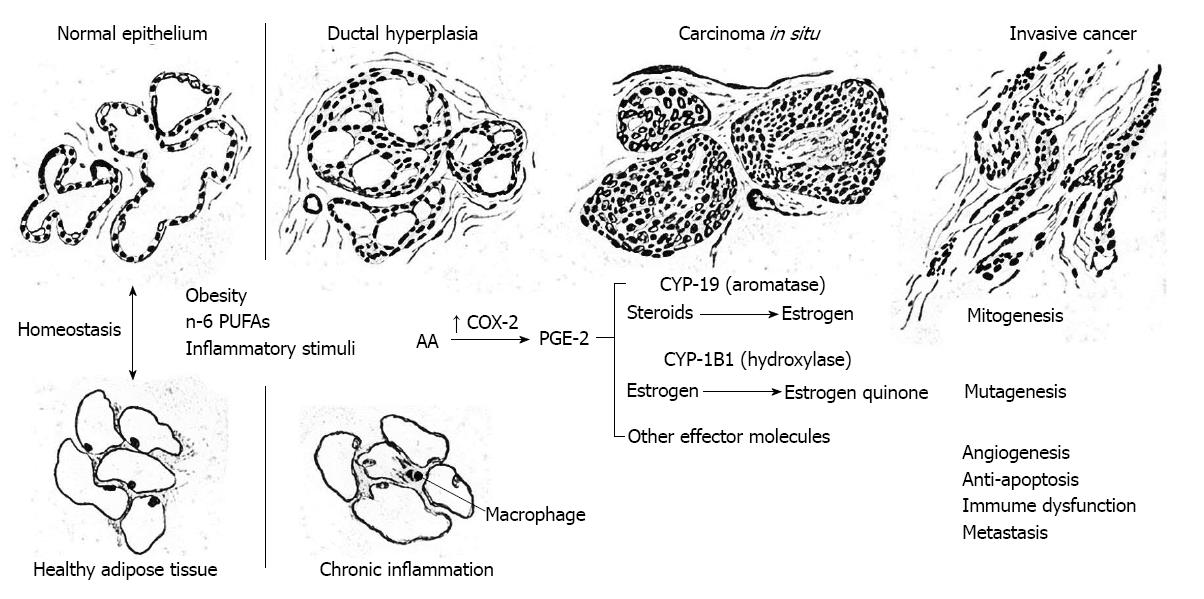Copyright
©2014 Baishideng Publishing Group Inc.
World J Clin Oncol. Oct 10, 2014; 5(4): 677-692
Published online Oct 10, 2014. doi: 10.5306/wjco.v5.i4.677
Published online Oct 10, 2014. doi: 10.5306/wjco.v5.i4.677
Figure 5 Model of COX-2-driven inflammogenesis of breast cancer.
Key steps in the transition of normal mammary ductal epithelium to invasive cancer are as follows: (1) Healthy mammary adipose maintains homeostasis of the mammary epithelium; (2) Pro-inflammatory stimuli (e.g., adipokines, cytokines and n-6 PUFA) induce macrophage infiltration and chronic inflammation of the mammary stroma; (3) COX-2 is upregulated and constitutively expressed by adipocytes, immune cells and epithelial cells; (4) COX-2-catalyzed PGE-2 induces transcription of the CYP-19 gene and aromatase-catalyzed estrogen biosynthesis by adipocytes; (5) Estrogen stimulates estrogen receptors of epithelial cells to promote cell proliferation; (6) PGE-2 induces CYP-1B1 in epithelial cells resulting in hydroxylation of estrogen that is converted to estrogen quinone that has mutagenic impact; and (7) PGE-2 induces a profile of genes in epithelial cells that promote angiogenesis, loss of apoptosis, immunosuppression and metastasis (see text for discussion). COX-2: Cyclooxygenase-2; PGE-2: Prostaglandin E2; n-6 PUFA: n-6 polyunsaturated fatty acids.
- Citation: Harris RE, Casto BC, Harris ZM. Cyclooxygenase-2 and the inflammogenesis of breast cancer. World J Clin Oncol 2014; 5(4): 677-692
- URL: https://www.wjgnet.com/2218-4333/full/v5/i4/677.htm
- DOI: https://dx.doi.org/10.5306/wjco.v5.i4.677









